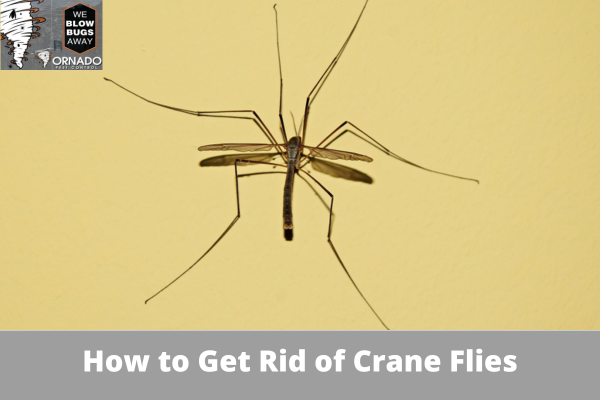Crane flies, often known as “mosquito hawks” or “daddy longlegs,” are frequent insects that cause problems in and around our houses. While they do not directly threaten people, their presence can be unpleasant and ugly. Don’t panic if you find yourself coping with an infestation of these flying insects! This blog will look at numerous efficient ways to eliminate crane flies and keep your home bug-free.

Understanding Crane Flies
Before diving into eradication measures, it’s critical to understand crane flies. They are innocuous insects with thin bodies and long legs resembling giant mosquitoes. Crane flies are drawn to damp, moist settings and lay their eggs in organic matter-rich locations. Adult crane flies eat on nectar and other sweet substances, and their favorite haunts are gardens and outdoor locations with flowering plants.
Reduce Moisture and Standing Water
Because crane flies like wet settings, eliminating or reducing sources of standing water around your home is one of the first measures in controlling their population. Inspect your property regularly for clogged gutters, puddles, and containers that may collect rainwater. Proper drainage will aid in the prevention of female crane flies from laying eggs in these places.
Trim and Maintain Lawns
Larvae of crane flies (also known as leatherjackets) feed on grass roots, causing lawn damage. Maintain the health of your grass by mowing and aerating it regularly to discourage its existence. Furthermore, not overwatering your grass will keep the soil drier, making it less appealing to crane flies for egg-laying.
Natural Predators
Encourage natural predators of crane fly larvae, such as birds, frogs, and toads, and beneficial insects, such as ground beetles. Bringing these critters to your garden or lawn can help control the crane fly population.
Use Yellow Light Bulbs
Outdoor white lights should be replaced with yellow or sodium vapor lamps, less appealing to crane flies and other flying insects. This simple modification can drastically reduce the quantity of crane flies in your neighborhood.
Physical Barriers
If you have adult crane flies in your home, physical barriers such as window screens and door sweeps can help keep them out. Caulk any holes or cracks around windows and doors to prevent insects from entering.
Insecticides
If the infestation is severe and none of the preceding treatments are effective, you may consider applying insecticides. Always use environmentally safe, targeted pesticides made exclusively for crane flies. To reduce environmental impact, carefully follow the directions and avoid overusing these compounds.
Conclusion
Tornado Pest Control LLC has the knowledge and experience to clear your home of crane flies and provide a bug-free environment. To deter crane flies, reduce dampness and standing water, maintain lawns, and attract natural predators. Our eco-friendly pesticides may tackle severe infestations when applied appropriately as a last resort. To prevent these flying insects, install physical barriers and replace outdoor lighting with yellow or sodium vapor lamps. Trust us to deliver customized solutions and to make your house a peaceful, pest-free refuge. For effective crane fly management, call Tornado Pest Control LLC today.


